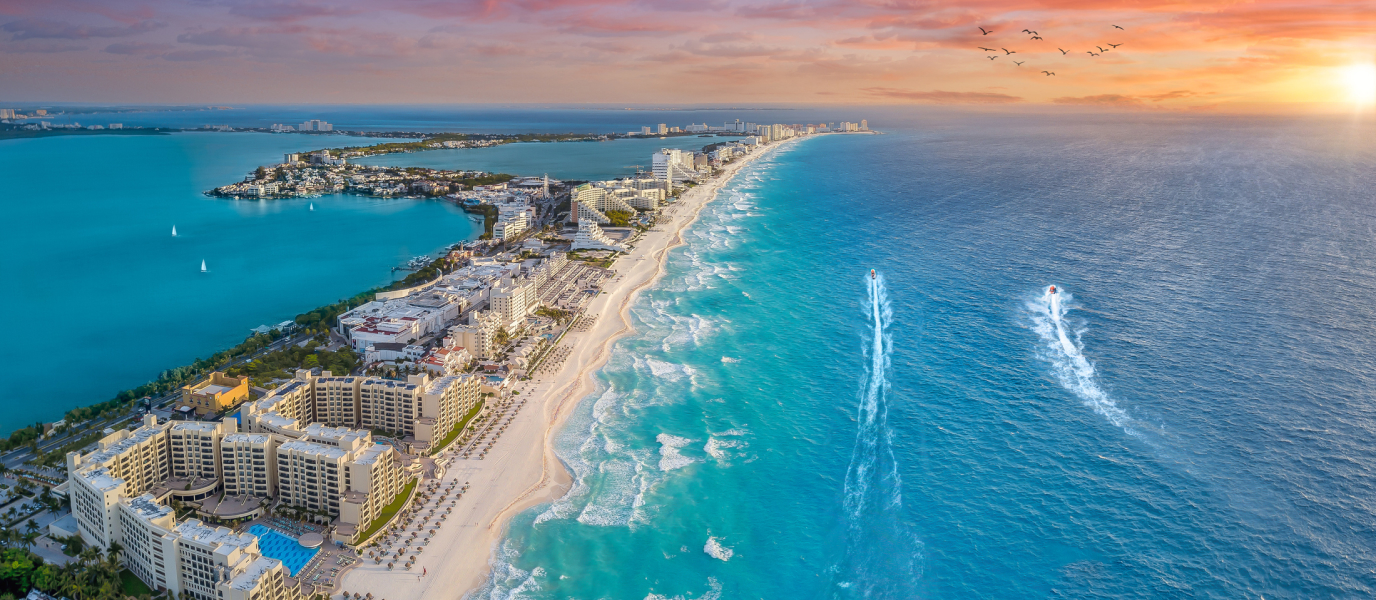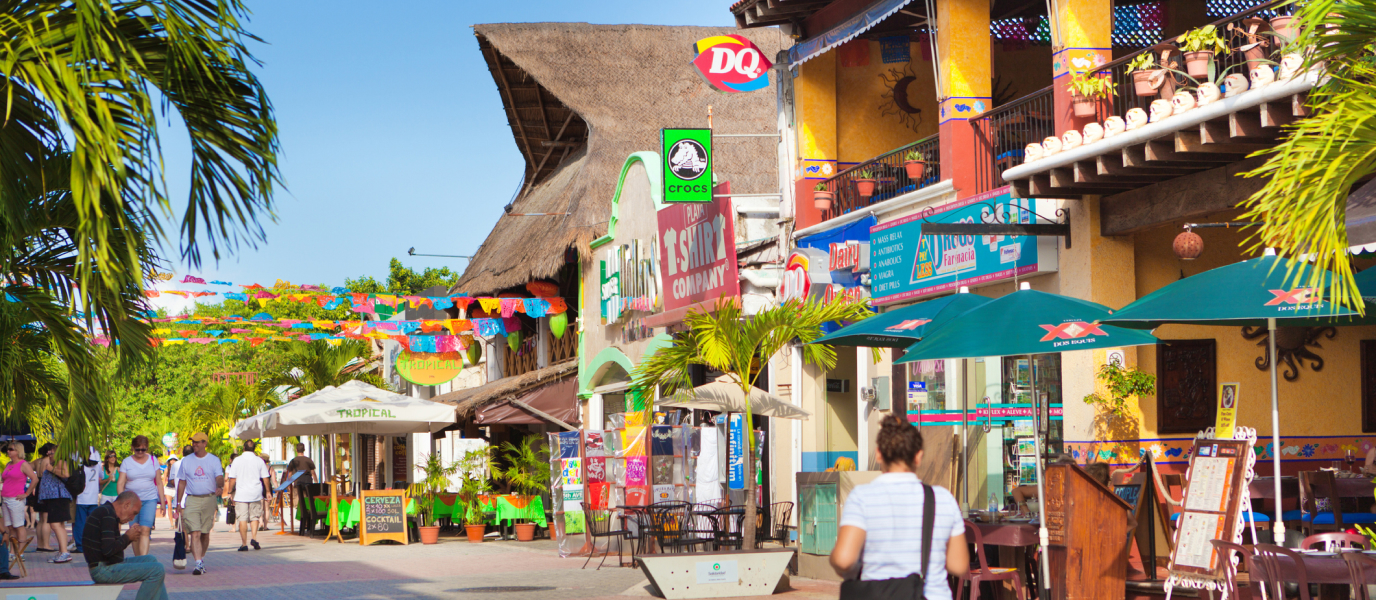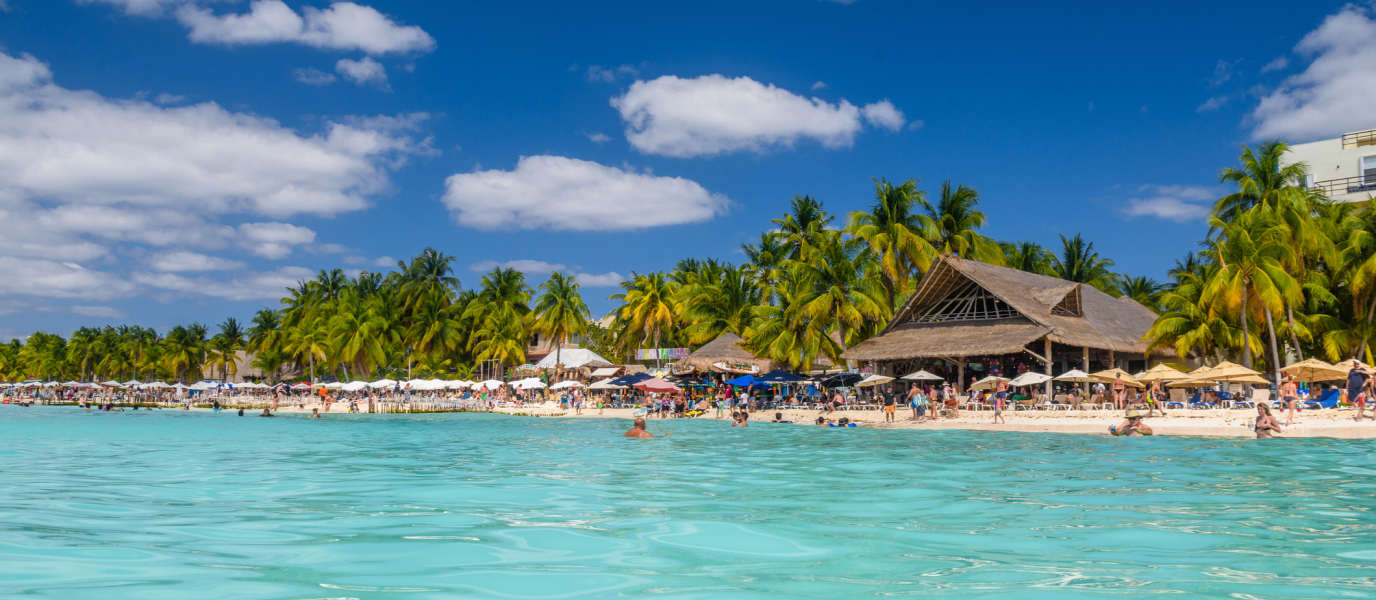Located halfway between Chichen Itza and Merida, and about 155 miles from Cancun, Izamal is a city that summarizes the history of the Yucatan Peninsula in a very exceptional manner, from the pre-Columbian times all the way to contemporary Mexico, passing through the Colonial period and the early days as an independent country. That is precisely why this interesting place is known as the “City of the Three Cultures”.
Ancient Maya pyramids, impressive convents and houses of the XVI, and XVIII centuries, delicate handicrafts, examples of best Yucatan-style cuisine… Izamal is all that and more. It’s not luck that since 2001 this city is part of the list of Mexicos’s Magic Towns, a title that marks the place as one of the most picturesque and interesting spots in the country.
Either way, on your next vacation to Riviera Maya you have to save the time to visit Izamal and discover this wonderful destination. You will fall in love with its characteristic yellow and white painted houses, its lovely squares and parks, and the hospitality of its people. Let all the charm of its three cultures captivate you, and enjoy a day that, without any doubts, will remain marked in the heart.
Things to do in Izamal
Izamal is a magical place and, luckily, it is also a small town. So take it easy, discover the town step by step, let all of its many wonders soak in. Stroll through the streets of this beautiful and quiet city, on foot, by bike, or in the typical horse-drawn buggies. Do it accompanied by a local guide, and discover the incredible experiences that Izamal has in store for you.
1. Convent of San Antonio de Padua
Founded in 1549 by the Franciscan missionary Fray Diego de Landa, this enormous building is the undisputed symbol of the city and one of the most important examples of the rich religious architectural heritage of the colonial period. The convent is situated on a high plateau, which is actually the foundation of an ancient Maya pyramid known as Pop-hol-Chac, whose stones were used to build the religious edifice.
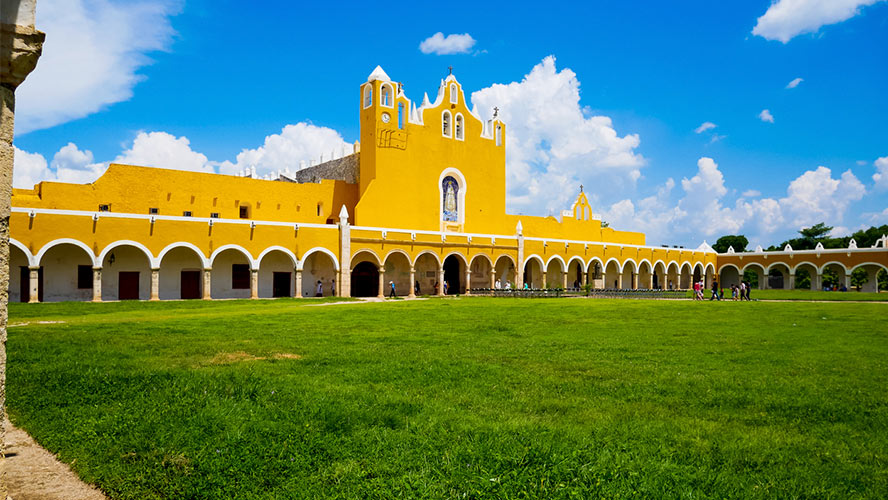
Flanked by 75 arches, its huge main atrium is the largest enclosed atrium in America and the second-largest in the world after St. Peter’s Square, in the Vatican. The whole complex –connected to the streets below by three ramps– is painted in the typical colors of Izamal, yellow and white, and its main buildings stand on the eastern flank. Inside the convent’s church, you can contemplate a beautiful, gold-plated Baroque altarpiece. Several mural paintings from the XVI and XVII centuries, and the famous sculpture of the Virgin of the Immaculate Conception known as The Virgin of Izamal (patroness of Yucatan), are also among the important religious works of art at this unique place.
2. Kinich Kakmó, the temple of the solar god
Founded by the Maya people of the Itza before settling in Chichen-Itza, Izamal was one of the great cities of the Yucatan Peninsula in pre-Columbian times. The Kinich Kakmó pyramid, located just three blocks away from the San Antonio convent, right in the heart of the city, was one of its most important temples.
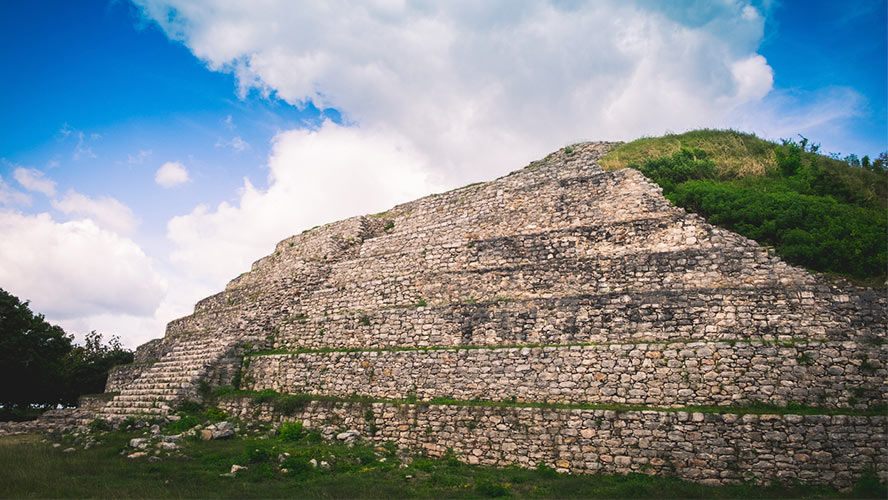
With its ten levels set upon a large quadrangular base, Kinich Kakmó is the largest pyramid of the Yucatan Peninsula in surface area. And it’s the third one in Mexico, right after the famous Pyramid of the Sun, in Teotihuacan, and the pyramid of Cholula, in Puebla, recognized as the largest pyramidal foundation in the world. In addition to its imposing size, don’t miss the views from the top of the temple. Almost 100 feet above the streets of Izamal! (And be careful when climbing!)
3. Itzamatul, the pyramid of Zamná
Also in the historic center of the city, behind the convent of San Antonio, you can find one of the great archaeological treasures of Izamal: the great pyramid dedicated to Zamná or Itzamná. The city itself owes its origin and name to this legendary Maya priest who was turned into a god.
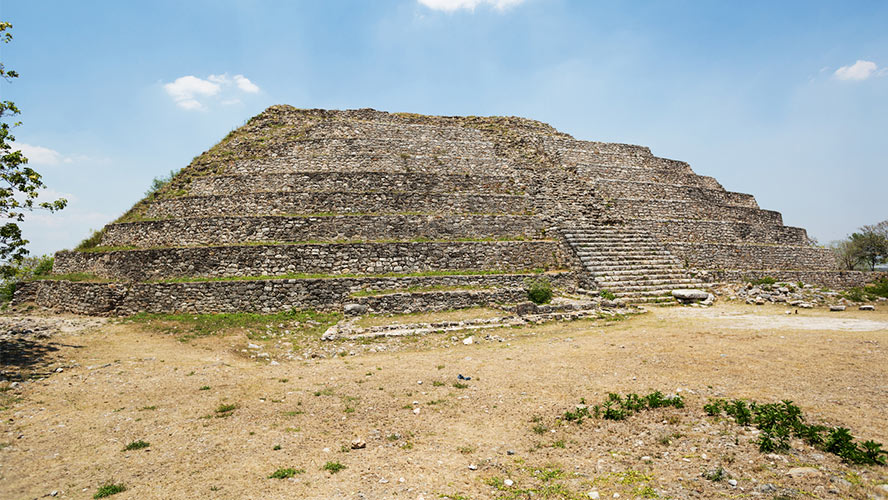
This pre-Columbian structure is more than 70 feet high and was built in three different time periods, all between the years 300 and 600 of our era. The evolution of the temple itself tells the history of this important city, from the end of the Protoclassic period (150 AD-250 AD) and the Early Classical period (250-600 AD) until the abandonment of Izamal in the early Postclassical (1000-1200 AD).
4. Through the streets of Izamal
One of the main attractions of this unique Magic Town is simply getting lost in its streets. Wander around to see how the ancient Maya pyramids alternate with old colonial mansions, all painted yellow and white; and with lovely squares and parks, small chapels and churches. Search for the plaques that tell you the city’s legends. Take the time to discover a museum, such as the Handicraft Museum or the Izamal Cultural and Handicraft Center, both on 31st street. Fine-tune your hearing and you will surely catch more than one city resident speaking the ancient Maya language.
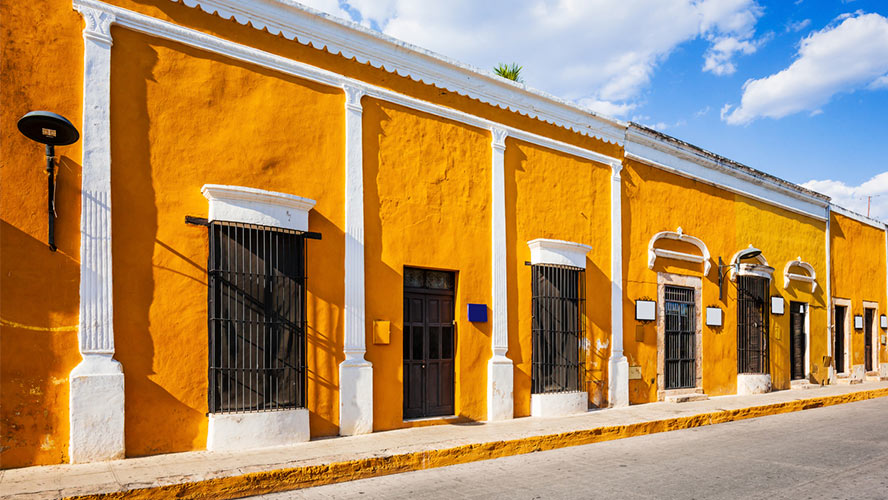
And after taking a good walk, relax in the shade at Plaza 5 de Mayo, between the convent of San Antonio and the historic building of the City Hall, and eat a typical marquesita. Or go to the neighboring Plaza Zamná, the oldest square in Izamal, where you can have a delicious ice cream. There you can also take a picture with the large volumetric letters that make up the colorful name of the city.
And when the sun goes down, you can’t miss the video mapping “The light of the Mayas” in the atrium of San Antonio’s Convent. Enjoy a trip back in time through the projection of images on the arches and facade of the temple accompanied by music and narration that features the city’s history, from the Maya era to the present day. A great show!
Where and what to eat in Izamal
Cochinita pibil, black stuffing, papadzules, stuffed cheese, salbutes, chaya with eggs, panuchos… traditional food of the Yucatan Peninsula is, obviously, the heart of the gastronomic offer at Izamal. Nevertheless, you can also find other options, from delicious artisan pizza and hamburgers to fresh fish and seafood. Here are just a few options of where to have a delicious meal:
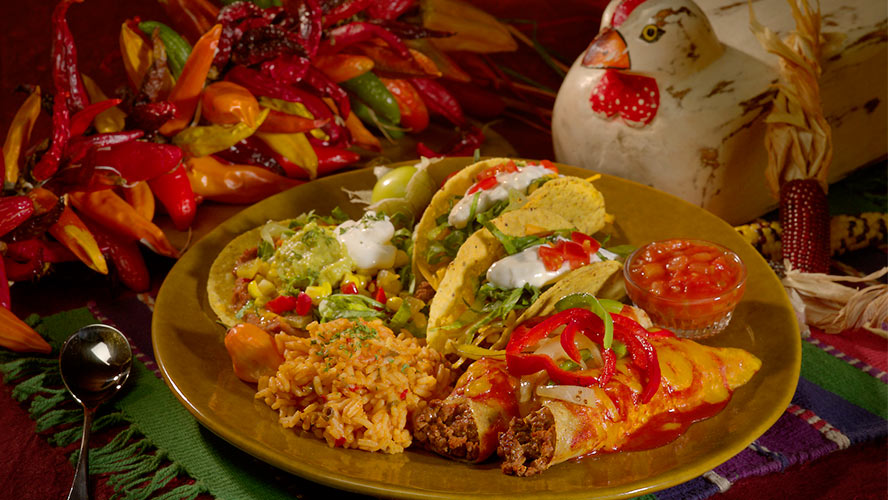
Kinichç
The most famous place to eat in the city, an authentic temple of traditional Yucatan-style cuisine.
Los Arcos
Under the arches of Plaza Zamná, this cozy restaurant-cafeteria offers you traditional cuisine, and they say that their desserts are the best in town.
Zamná
Located in an old house with a large palapa, four blocks from San Antonio, this is another excellent place to enjoy the best traditional recipes.
La Conquista
A little further from the center, near the old railway station, and also inside a beautiful house with a palapa, this restaurant is another example of the best typical Yucatecan food.
A tip: If you arrive early in Izamal and want to have a delicious breakfast or, at lunchtime, you prefer some typical snacks without having to go to a restaurant, be sure to visit the Municipal Market, next to the convent. Among its stalls, you will find authentic delicacies and a super authentic atmosphere.
Izamal is “living culture”
The “City of Three Cultures” is precisely that, living culture, and discovering, for example, the fine work of its artisans is the best way to see how pre-Hispanic, colonial and contemporary Mexico merge to create objects of enormous beauty. Visit any of the workshops that are located in different parts of the city and you will be able to see the skill, talent, and creativity of the hands of Izamal.
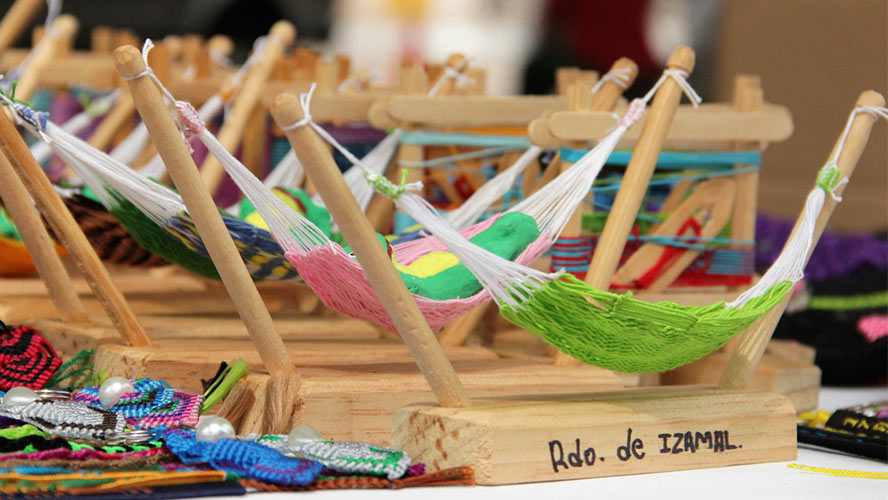
Another clear example of the cultural richness of the city is the different local festivities. So, if you have the chance, make your visit coincide with any of the most important ones, such as:
The Feast of San Antonio
Every June 13, the fiesta of San Antonio de Padua is celebrated with music, folk dance,s and other special events in the convent’s atrium.
The Holy Christ of Sitilpech
From the 19th until the 28th of October, Izamal celebrates the feast of the black Christ of Sitilpech, one of the most revered images in the region.
The Hanal Pixan, the meal of the souls.
From October 31 to November 2, the Yucatan version of the Day of the Dead is celebrated in every corner of the Peninsula. Its principal rite, but not the only one, is to offer the deceased a typical meal of the season in a table-altar adorned with flowers, candles, rue branches, etc.
The Virgin of the Immaculate Conception
Masses, processions, and folk music celebrate Mary Immaculate every year, on December 8. But the various activities that revolve around this party in honor of “Mama Linda” begin a week before.






























































